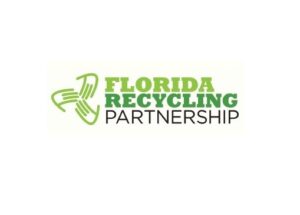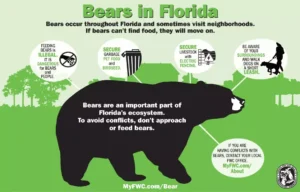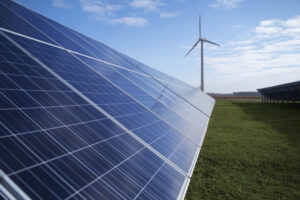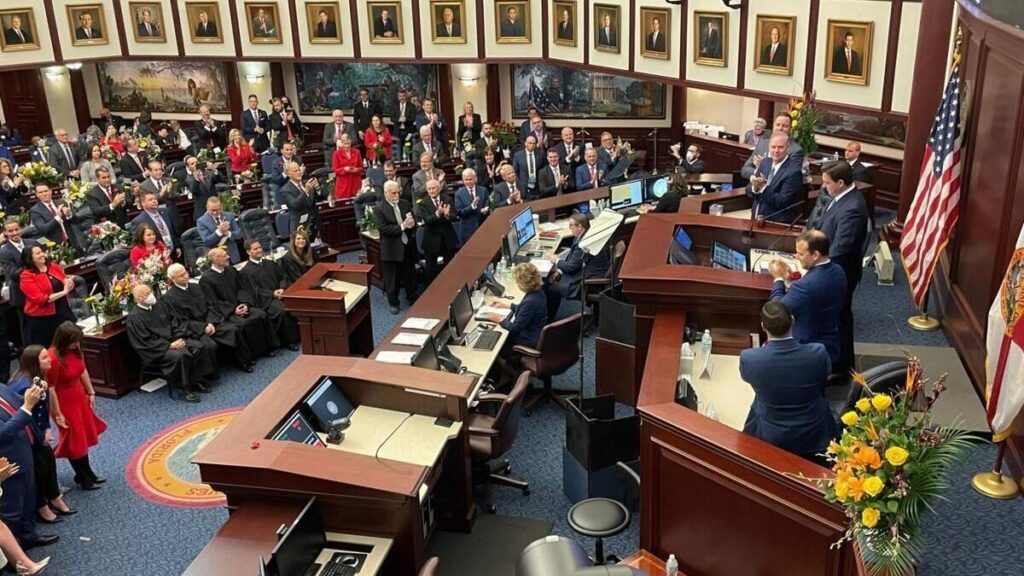BY BETH HICKLENLOOPER
The work of a family of fishermen is helping the St. Johns River Water Management District and partners better understand the tie between the activities of a few invasive fish species while also improving water quality along the St. Johns River.

Fishermen haul in a net full of exotic tilapia and armored catfish as part of a project to reduce the cycling of nutrients that cloud the waters of Lake Poinsett. Game fish caught in the nets are returned to the lake.
St. Johns River Water Quality
The District and the Wadley family partnered together in 2023 at Lake Poinsett, just west of the city of Cocoa. The Wadleys received a District permit to catch certain fish that contained high amounts of nutrients, and removing the fish from the ecosystem also eliminated the amount of sediment that stirs in waterbodies – another benefit. The 2023 harvest removed more than 80,000 pounds of exotic fish, removing 550 pounds of phosphorus. Lake Poinsett is one of the many lakes along the St. Johns River where the District is working on water quality improvement projects.
It all started in 2022 when District Environmental Scientist Steve Miller initiated the project for the District after he and other District scientists and the Florida Fish and Wildlife Conservation Commission (FWC) watched with concern as signs of tilapia and armored catfish increased in the lakes and headwaters of the St. Johns River, where the District has worked for decades to retore marshes. These invasive fish appear to be on the rise in the river’s headwaters. The exotic tilapia’s shoreline nests are even visible in satellite photos on Google Earth.
So why worry about these exotic fish?
“Tilapia stir up sediment as they nest and impact how nutrients cycle — they could be having an impact on water quality, especially at such a large population size,” Miller said.
Removing tilapia and armored catfish benefits water quality by preventing this sediment resuspension, which releases more nutrients — including nitrogen and phosphorus — into the water column. In addition, harvesting tilapia and armored catfish helps to remove the nutrients stored in the bodies of the fish. These fish live at the bottom of the lake and feed on algae and aquatic plants. Therefore, harvesting the tilapia and armored catfish removes those nutrients from the water body.
During the 2023 harvest, the fishermen were only interested in targeting the invasive tilapia and hoplos (a type of armored catfish). The fishermen benefit from the project by selling their catch to a fish house. But along with the tilapia, they captured bass and bluegill — both good game fish — and plecos, another invasive armored catfish. A District permit allows them to keep only the tilapia and the armored catfish. Everything else — the bluegill, the bass, the turtles and the alligators caught in their nets — is sorted out by hand and returned to the lake. The plecos can’t be sold and end up in a landfill.
Miller started a pilot project for the District in 2022 on Lake Winder to determine if it could be a cost-effective way to remove nutrients. The project was later expanded to lakes Florence and Poinsett. Because the fishermen sell the tilapia, the District’s cost is only in the staff monitoring and collecting data. The harvest of the exotic fish is limited and specifically timed to avoid disrupting spawning season of the native American shad.
The first time teams pulled the net, they were shocked. Because of the unexpected volume of exotic fish, the fishermen worked until 3 a.m. and used a semi-truck to haul the fish away. Over the course of a three-day project, the fisherman pulled 23,000 lbs. of tilapia (the equivalent of 144 lbs. of phosphorus pollution) from the lake. That’s the equivalent amount of fertilizer that would cover 10 football fields.
The project’s benefits go beyond nutrient removal. Removing tilapia and armored catfish reduces nutrient cycling within the lake. Tilapia build volcano-shaped nests on the lakebed, digging up sediment to reach the bare sandy soil beneath. The stirred-up sediment decreases water clarity, which affects the submerged aquatic vegetation, a key to healthy aquatic environments. The plecos burrow to make their nests and also impact the ecosystem, generally along the shorelines. But on Lake Florence, the District found the fish also burrowing in the lake’s bottom. This burrowing causes erosion and stirs up muck, affecting water quality, but also threatens levees used for flood protection, damaging the structures and increasing maintenance costs.
The District’s project is also benefiting FWC’s work with data about the direct impact on habitat caused by tilapia and plecos when they become too abundant. Armed with data collected during the 2023 harvests, FWC can better plan for management of exotic fish and the District will be able to adapt its water quality projects. Initial project results are promising and could lead to additional exotic fish harvests in the future.











